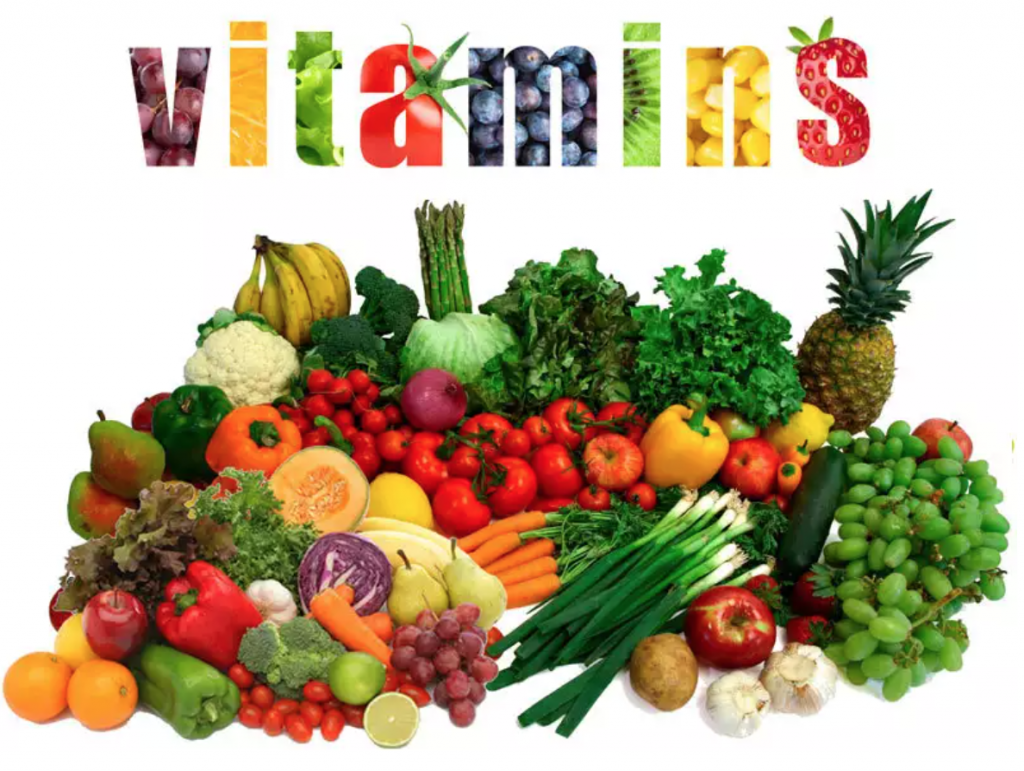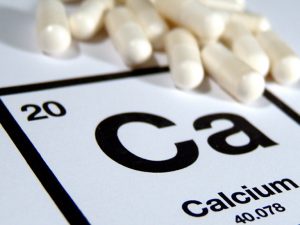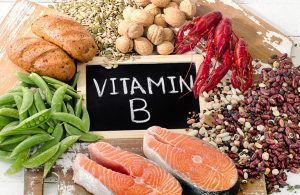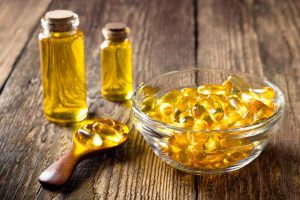
Today’s Teaching Video from Keiran Llaneza, P.A.:
Homework:
Assess your quality of food. Is it likely you are getting the vitamins and minerals you need on a regular basis? What might you need a supplement for and what can you do better food wise with?
Teaching:
Let’s get some perspective. Typical Deficiencies in the US:
Vit D – 95% some, 49% significant
Vit E – 94%
Magnesium – 61% (68% of Americans struggle with sleep) *correlation
Vit A – 51%
Vit C – 43%
Calcium – 38%
Studies are showing a correlation between those that have healthy happy immune systems due to getting the daily vitamins and minerals they need and not getting/seeing horrific responses to Covid -19.
Furthermore, Angiotensin-converting enzyme 2 (ACE2) activation is reportedly a protective mechanism that the body has, however it decreases with age. How do you boost that? Curcumin, VitD, VitA, Exercise, Melatonin – sleep!

Blood Panel:
Wait a minute, you had your physical and were told your numbers were “FINE”… so they were checked at your check up, right?! Well, your doctor is not checking your nutrient status when they check your blood, they are checking your blood to see if you are sick. They are looking for signs of illness, not wellness. Now keep in mind, that is a good thing that they are checking your blood for markers that may indicate you have problems with your kidneys, or liver, immune system, and more! You absolutely want your doctor to take care of you in that manner.
Asking for a full vitamin and mineral blood panel is a wonderful thing. Actually seeing what you’re deficient in is helpful. Then you can take a season to try to battle that with food. Retest and go from there with either continuing the regimen or adding a specific vitamin/mineral supplement.
If you do not have a primary care physician, we have connection with plenty in the City of Charlotte. Another option is visiting this website to go through your own journey f testing: https://www.wellnessfx.com/
What are vitamins?
Vitamins have three characteristics:
- They’re natural components of foods; usually present in very small amounts.
- They’re essential for normal physiologic function (e.g., growth, reproduction, etc).
- When absent from the diet, they will cause a specific deficiency.
Vitamins are generally categorized as either fat soluble or water soluble depending on whether they dissolve best in either lipids or water.
Vitamins and their derivatives often serve a variety of roles in the body – one of the most important being their roles as cofactors for enzymes – called coenzymes. (See figure below for an example.)
What are minerals?
Most minerals are considered essential and comprise a vast set of micronutrients. There are both macrominerals (required in amounts of 100 mg/day or more) and microminerals (required in amounts less than 15 mg/day).
Why do I need Vitamins & Minerals?
Vitamins, minerals, and other nutrients are essential for the human body. Vitamin deficiencies can create or exacerbate chronic health conditions.
There’s only so much we can get through food these days. We’re highly likely to be missing some essential nutrients and almost certain to have less than the optimal amounts of many others. It’s still important to eat right first but then supplement with vitamins.
What happens when I’m missing some of these vitamins and minerals?
If we find deficiencies with specific vitamins and minerals, we can potentially prevent disease, rather than finding it once it has hit you at full force.
Here are just a few examples of nutrients and how they affect your body:
-
Deficiencies in vitamin D, iron, vitamin A, and selenium, just to name a few can cause hypothyroidism, even if you are taking hypothyroid medication.
-
Vitamin D deficiencies can affect athletic performance by decreasing strength and velocity.
-
Vitamin B6 deficiencies can cause problems with depression, sleep, anxiety and fatigue.
-
CoQ10 deficiencies can cause problems with blood pressure, mitral valve prolapse, and mental fatigue.
- Vitamin A deficiencies can cause problems with fertility and conceiving, acne, healing from wounds
- Vitamin C is needed for the health and repair of various tissues in your body, including skin, bone, teeth and cartilage. Over time, a lack of vitamin C means that new collagen cannot be formed. This causes various tissues in your body to start to break down and the health and repair of your body become affected. Persistent (chronic) vitamin C deficiency, usually over a period of around three months or more, can lead to an illness known as scurvy.

Vitamin/Mineral Absorption:
Our bodies and the foods we eat contain minerals; we actually absorb them in a charged state (i.e., ionic state). Minerals will be in either a positive or negative state and reside inside or outside or cells.
Molecules found in food can alter our ability to absorb minerals. This includes things like phytates (found in grains), oxalate (found in foods like spinach and rhubarb), both of which inhibit mineral absorption, and acids. Even gastric acidity and stress can influence absorption.
Vitamin Tips:
- If you take a large dose of a mineral, it will compete with other minerals to reduce their absorption.
- Some vitamins can actually enhance the absorption of other nutrients.
- Coffee and Tea can decrease the absorption of some vitamins and minerals.
Clashing Vitamins and Enhancing Vitamins:
- One caveat to fat soluble vitamins is Vitamin A and K – absorption may actually be better absorbed when taken together.
- Magnesium absorption increases when combined with Vitamin D.
- Iron absorption increases when combined with Vitamin D.
- Folic Acid absorption increases when combined with Vitamin C.
- Vitamin C can enhance iron absorption.
- Vitamin D facilitates the absorption of calcium. It is therefore important to meet the daily intake of 15 micrograms of vitamin D to ensure your body can absorb the recommended 1,000 milligrams of calcium it needs per day.
- Calcium and magnesium are the most often minerals taken in large doses and should, ideally, be taken apart from other minerals.
Let’s dig into understanding some of the more hot topic vitamin/mineral supplements.
Vitamin D:
Vitamin D is more like a hormone than a drug. It is produced by the body when exposed to sunlight and most of us don’t produce enough (25,000 iu/day) even if we frequently are out in the sun. It would take you prancing around, practically naked for a couple hours a day to produce those levels of Vitamin D and most Americans are deficient. Vitamin D level is measured by hydroxyvitamin D – the chemical form – in the blood and “normal” levels are stated to be 35 but that is considered by many to be a “maintenance” level and that levels upwards of 70-90 are ideal, especially for athletes. Vitamin D helps reduce inflammation, risk of colon and breast cancer, improves mood and upper respiratory health by aiding the fight against infections from viruses and other pathogens, and allows the brain to release melatonin so we can fall asleep easier – like when you’ve been out in the sun all day and are tired as soon as night falls. This is why Vitamin D is most effective when taken at night, about an hour before bedtime and liquid drops taken sublingually are the best form especially if you can hold the liquid under your tongue for 30 seconds before swallowing so it can really soak in and start to work before it has to be digested.

Magnesium:
 Magnesium is probably one of the top recommended supplements as it is an essential element in biological systems and most are likely deficient. There’s been recent studies stating that 85% of Americans are deficient and we all know that most Americans most certainly lead the typical sedentary, American lifestyle so imagine the deficiencies in the trained and even arguably over-trained population. Magnesium is important to athletes because it regulates heart rhythm, allows muscles to contract and relax properly, reduces blood pressure, and is necessary to produce ATP (the main source of energy in our cells) which must be bound to a magnesium ion in order to be biologically active. Check your bottle to avoid Sudden Poop Onset (SPO) here: Supplements based on amino acid chelates, such as Mg glycinate and Mg malate are much better tolerated by the digestive system and much more absorbable by the body the other (cheap) forms of magnesium such as Mg oxide or Mg carbonate. This is best-taken post-workout on an empty stomach. Sedentary individuals need 600 mg a day and larger athletes in heavy training mode could do up to 2,000 mg a day.
Magnesium is probably one of the top recommended supplements as it is an essential element in biological systems and most are likely deficient. There’s been recent studies stating that 85% of Americans are deficient and we all know that most Americans most certainly lead the typical sedentary, American lifestyle so imagine the deficiencies in the trained and even arguably over-trained population. Magnesium is important to athletes because it regulates heart rhythm, allows muscles to contract and relax properly, reduces blood pressure, and is necessary to produce ATP (the main source of energy in our cells) which must be bound to a magnesium ion in order to be biologically active. Check your bottle to avoid Sudden Poop Onset (SPO) here: Supplements based on amino acid chelates, such as Mg glycinate and Mg malate are much better tolerated by the digestive system and much more absorbable by the body the other (cheap) forms of magnesium such as Mg oxide or Mg carbonate. This is best-taken post-workout on an empty stomach. Sedentary individuals need 600 mg a day and larger athletes in heavy training mode could do up to 2,000 mg a day.
What Does Magnesium Do?
This micronutrient plays a role in many of our body’s natural functions. In fact, it is involved in over 300 biological processes.
Magnesium is stored in your bones – so naturally, it plays a role in the metabolism of bone. Diets that are deficient in magnesium can lead to eventual bone loss.
It is a catalyst for energy production by its ability to active ATP. ATP is what our body uses for energy. If you’re deficient in magnesium, chances are you feel sluggish or fatigued regularly.
Magnesium also regulates levels of calcium and potassium within the body. Magnesium is needed for the active transport of calcium and potassium ions between cells. This plays an important role in ensuring our heart beats regularly and our nerves and muscles function properly.
Magnesium has been cited as helping calm anxiety by regulating hormones that promote relaxation; specifically it plays a role in GABA – a neurotransmitter that produces serotonin. Serotonin is most often referred to as the “happy hormone” and is important for mental health.
It also plays a key role in digestion by relaxing the muscles of the digestive tract – allowing digestion to happen easier and holding the potential to clear up constipation.
Calcium:
 The dairy industry has spent so much time and money burning the “calcium = dairy foods” association into our collective synapses that it might as well be called Vitamin Milk.
The dairy industry has spent so much time and money burning the “calcium = dairy foods” association into our collective synapses that it might as well be called Vitamin Milk.
A lot of people assume they only need it for their bones when in fact it does all kinds of other useful things. Athletes, for example, need their calcium because it’s an essential nutrient for muscle contraction. A healthy calcium intake is also crucial for nerve function (if you like feeling things when you touch them, thank calcium for it!), blood pressure, and wound healing.
Calcium is also important for maintaining body pH – even though the acid/alkaline foods hypothesis is a complete myth, it’s still important to get enough calcium to keep your body in pH balance.
On top of the shortsighted focus on bones, calcium is also misunderstood in another way: the idea that more is always better. Inadequate calcium is bad, no doubt about it, but the dangers of calcium overload are just as real. If you eat more calcium than your body can use, you run the risk of depositing it in places where it really shouldn’t be, including your kidneys (as kidney stones), and your arteries (as plaque). Like most nutrients, too little is bad, enough is good, but more is not always better! Luckily, too much calcium is very difficult to achieve from whole foods. To get these effects, you’d need to eat over 2500mg of calcium, over twice the RDA. Realistically, it’s only going to happen if you’re taking a high-dose supplement.
So how much calcium to you really need to get all the advantages, with none of the potential drawbacks? The RDA of calcium is 1,000mg (for men) to 1,200mg (for women), but we’re going to get a little more precise than that. The number the RDA is based on, the number that really matters , is how much calcium you absorb, not how much you eat. The average adult needs 300-400mg of calcium to be absorbed every day.
Calcium Math, Part 1: Food Sources of Calcium
| Food | Serving Size | Calcium per serving |
| Bones | 3 grams (weight of a penny, or the nibbled-off end of a chicken drumstick) | Roughly 1,000mg |
| Dried seaweed | 1 tbsp. (14 grams) | 560-980mg (depending on species) |
| Canned salmon (with bones) | 1 6-ounce serving | 424mg |
| Sardines (with bones) | 1 can (3.75oz) | 351mg |
| Most dairy products | 1 cup (8oz) | 300mg (approximately) |
| Collard greens | 1 cup cooked | 266mg |
| Spinach | 1 cup cooked | 245mg |
| Turnip greens | 1 cup cooked | 197mg |
| Scallops | 6 ounces | 193mg |
| Fresh seaweed | 3.5 ounces (100g) | Approx. 170mg |
| Bok choi | 1 cup cooked | 158mg |
| Mineral water (e.g. San Pellegrino) | 20oz (the size of a vending-machine bottle) | Varies; the average for the US and Canada is 122mg. |
| Mustard greens | 1 cup cooked | 104mg |
| Swiss chard | 1 cup cooked | 101mg |
| Broccoli | 1 cup cooked | 94mg |
| Kale | 1 cup cooked | 94mg |
| Tap water (note: this doesn’t include bottled water: purified bottled water like Dasani has almost none) | 8oz (1 cup) | Varies; the US national average is 12mg* |
| Bone broth | 8oz (1 cup) | Unknown, and varies from batch to batch. |
Calcium Math, Part 2: Absorption Rates
Take a look at the absorption rate of calcium from some common food sources, sorted from best (most absorbable) to worst (least absorbable):
| Source | Percent of Calcium Absorbed (source for everything not otherwise cited) |
| Collard greens | 65% (source) |
| Broccoli | 61% |
| Bok choy | 54% |
| Carrots | 53% |
| Turnip greens | 52% |
| Kale | 49% |
| Mustard greens | 40% |
| Mineral water | 34-37% (source) |
| Most milk and dairy products | 32% |
| Sardines in oil | 27% |
| Canned salmon | 27% |
| Bone meal | 27% (source) |
| Spinach | 5% |
| Seaweed | Unknown |
The reason why vegetables have so much variation here is their varying content of two antinutrients, phytates and oxalates. Both of these antinutrients bind to the calcium in the vegetables – it’s there, but you can’t absorb it because it’s already spoken for. Spinach has a particularly high content of oxalates, accounting for the low bioavailability of the calcium it contains. So if you’ve ever heard any arguments that spinach has more calcium than milk, you can be sure that the person telling you that hadn’t done their homework properly.
Calcium Math, Part 3: The Big Picture
Now comes the really useful part. To get an accurate idea of what foods are good sources of absorbable calcium (the calcium that matters), you can put the first two tables together. Then you get:
| Food | Serving Size | Calcium absorbed per serving |
| Bones | 3 grams (weight of a penny, or the nibbled-off end of a chicken drumstick) | 270mg |
| Collard greens | 1 cup cooked | 173mg |
| Canned salmon (with bones) | 1 6-ounce serving | 114mg |
| Turnip greens | 1 cup cooked | 102mg |
| Milk | 1 cup | 96mg |
| Sardines (with bones) | 1 can (3.75oz) | 95mg |
| Bok choi | 1 cup cooked | 69mg |
| Broccoli | 1 cup cooked | 57mg |
| Kale | 1 cup cooked | 46mg |
| Mineral water (e.g. San Pellegrino) | 20oz (the size of a vending-machine bottle) | 41-45mg |
| Mustard greens | 1 cup cooked | 42mg |
| Spinach | 1 cup cooked | 12mg |
| Tap water (note: this doesn’t include bottled water: purified bottled water like Dasani has almost none) | 8oz | 4mg |
| Dried seaweed | 1 tbsp. | Unknown |
| Fresh seaweed | 3.5oz | Unknown |
| Scallops | 6 ounces | Unknown |
| Swiss chard | 1 cup cooked | Unknown |
| Bone broth | 1 cup (8oz) | Unknown |
B-Complex:
 B-Vitamins increase energy production and are neurotransmitter cofactors so they help improve our mood, and they help us detoxify which we need after exercise (and binging). The process of building and repairing muscle (processing protein) depletes B-Vitamins so if you’re lifting heavy or damaging your muscle tissue in your workouts or job, you need to take extra B-Vitamins to help the rebuilding (strengthening) process because you are burning through them at an alarming rate. Look for Riboflavin-5’-Phosphate (B-2), methylcobalamin (B-12), Pyridoxal-5’-Phosphate (B-6), and Benfotiamine (B-1) on the label as they are the absorbable forms your body can use. Avoid any of the B Vitamins in the hydrochloride (HCL) form as it is cheap and unabsorbable by your body. Definitely take this supplement in the morning as the B-12 will keep you awake. Don’t be afraid to take thousands of the US RDA.
B-Vitamins increase energy production and are neurotransmitter cofactors so they help improve our mood, and they help us detoxify which we need after exercise (and binging). The process of building and repairing muscle (processing protein) depletes B-Vitamins so if you’re lifting heavy or damaging your muscle tissue in your workouts or job, you need to take extra B-Vitamins to help the rebuilding (strengthening) process because you are burning through them at an alarming rate. Look for Riboflavin-5’-Phosphate (B-2), methylcobalamin (B-12), Pyridoxal-5’-Phosphate (B-6), and Benfotiamine (B-1) on the label as they are the absorbable forms your body can use. Avoid any of the B Vitamins in the hydrochloride (HCL) form as it is cheap and unabsorbable by your body. Definitely take this supplement in the morning as the B-12 will keep you awake. Don’t be afraid to take thousands of the US RDA.
However, there are several different types of B Vitamins. In fact, there’s 12! Read HERE for a greater understanding of the different ones and risks.
Fish Oil:
 Omega 3 Fatty Acids (Fish Oil) is probably one of the most commonly used supplements on the market today and for good reason. When high-quality fish oil is taken in large enough amounts, it provides the biggest bang for the buck as far as supplements are concerned. Most people know about the improved cardiovascular health and function, improved lipid profiles (lower triglycerides), improved brain function and mental acuity, and its powerful anti-inflammatory properties without harmful side effects like over the counter products. But what people don’t know is that every fish oil isn’t made the same. Depending on the size, type, or natural habitat of fish used and how it was processed can determine the quality and levels of toxins present. So besides looking for the cGMP seal, look for brands that use small, cold-water (near the polar ice cap so it is more pure) fish like anchovies or sardines vs. larger fish like tuna or those harvested in warmer waters. On the label, impurities are stated – look for those measured in parts per BILLION not parts per million. Athletes and those with body composition goals should start with 3,000 mg of fish oil spread out in 2-3 servings (it only lasts in the body about 8 hours) and work toward taking up to 6,000 mg per day.
Omega 3 Fatty Acids (Fish Oil) is probably one of the most commonly used supplements on the market today and for good reason. When high-quality fish oil is taken in large enough amounts, it provides the biggest bang for the buck as far as supplements are concerned. Most people know about the improved cardiovascular health and function, improved lipid profiles (lower triglycerides), improved brain function and mental acuity, and its powerful anti-inflammatory properties without harmful side effects like over the counter products. But what people don’t know is that every fish oil isn’t made the same. Depending on the size, type, or natural habitat of fish used and how it was processed can determine the quality and levels of toxins present. So besides looking for the cGMP seal, look for brands that use small, cold-water (near the polar ice cap so it is more pure) fish like anchovies or sardines vs. larger fish like tuna or those harvested in warmer waters. On the label, impurities are stated – look for those measured in parts per BILLION not parts per million. Athletes and those with body composition goals should start with 3,000 mg of fish oil spread out in 2-3 servings (it only lasts in the body about 8 hours) and work toward taking up to 6,000 mg per day.
Understanding Cholesterol:
2 Types of LDL
LDL – C “The Good”
- An ESTIMATE of the cholesterol mass within LDL-particles.
LDL – P “The Bad”
- Risk for atherosclerosis is more related to this LDL reading
Best Ways to Lower Your Cholesterol
- Nutrition
- High Dose Fish Oil
Understand Omega 3, 6 & 9
| Can the body make it on it’s own? | Are we typically getting enough? | Benefits | Examples | |
| Omega 3 | No | Must get from diet as our bodies cannot make it and we typically DON’T eat enough! | Brain food, Triglycerides, Rheum Arth, Depression, Baby Devel, Asthma, ADHD, Dementia | Eggs, Cod, Salmon, Mackerel, Sardines, Anchovies, Flax Seeds, Walnuts |
| Omega 6 | No | TOO MUCH – and leads to inflammation | energy for the body | Processed foods, Corn fed beef, Refined Vegetable Oils (corn, soy, sesame, and Food Cooked in those Oils |
| Omega 9 | Yes | No | metabolic health | Extra Virgin Olive Oil, Olives, Cashew Nut, Almond, Peanut, Avocado & Walnuts. |
What are Omega 3 Fatty Acids?
~These are Polyunsaturated fatty acids that are brain-essential as they cannot be produced by the brain or body. There are three key omega-3 fatty acids:
EPA:
- Help regulate inflammation by restoring several biological markers, known as the omega-6 to omega-3 ratio.
- Protects our genes and cell cycle
- Helps keep our stress response regulated
- Lowers triglycerides
DHA:
- Lowers triglycerides
- Can increase LDL good particle
- Supports nerves
ALA:
- Comes from plant sources so the best option for vegans or those who have a fish allergy.
- Anti-inflammatory- used to treat rheumatoid arthritis (RA), multiple sclerosis (MS), lupus, diabetes, renal disease, ulcerative colitis, and Crohn’s disease.
- Popular for preventing and treating diseases of the heart and blood vessels.
Where can I get these vitamins and minerals?

FOOD! Food is the number 1 best place to get these vitamins from. Should you have a blood panel done and see you are deficient in an area, google what foods are highest for that vitamin or mineral and start eating! However, if you still find you’re struggling to get your numbers up, supplementation is the next avenue.
CHECK OUT OUR ATTACHED LIST OF VITAMINS AND MINERALS AND THE BEST PLACES TO GET THEM VIA FOOD.
What brands do we recommend?
Daily Supplements Focused on Immune Function
*Dose suggestions per Dr. Rhonda Patrick. Remember to always check with your doctor before adding something new if you’re on medications already.
- Multivitamin – Pure Encapsulations O.N.E , Doterra– 1 capsule/daily
- Vitamin D3 – Thorne Research – D3 , Pure, OrthoMolecular Products (1,000iu) – 3,000iu/daily
- Probiotics – Visbiome Probiotic sachets , Metagenix, Garden of Life – 1 sachet/daily
- Vitamin C – Pure Encapsulations – Ascorbic Acid , Pure – 1-2 grams, 4x per day
- Quercetin – Pure Encapsulations – Quercetin – 250mg/daily
- N-acetyl L-cysteine – Life Extension – N-acetyl-L-cysteine , Pure – 1200mg/daily
- Glutathione – Pure Encapsulations – Liposomal Glutathione , Readisorb – 500mg/daily
- Zinc – Thorne Research – Zinc Picolinate , Pure – 15mg/daily
- Sulforaphane – via Prostaphane and Moringa
Additional Daily Supplements
- Fish Oil – Norwegian PURE-3 DHA , NOW Brand, Nordic Naturals, Barleans pills or Swirl Liquid – 6 capsules/daily
- Magnesium – Pure, Thorne’s Magnesium Bisglycinate
- Vitamin K2 – Life Extension Low-Dose Vitamin K2 (MK-7) – 1 capsule/2-3 times per week
- PQQ (Pyrroloquinoline Quinone) – Life Extension – PQQ 20mg – 2 capsules/daily
- Curcumin – Integrative Theraputics
- Cocoa Extract – CocoaVia – 2 capsules/daily
- Sulforaphane – Prostaphane – 1 capsule/daily
- Melatonin – Life Extension 300mcg , Readisorb – 1 capsule/nightly
- Hyrolyzed Collagen – Great Lakes – For improved joint and skin health
- Omega-3 Phospholipids – Wild Salmon Roe Caviar
Extras for specific populations:
- L-Glutamine – Pure
- Glucosamine – Pure, Thorne
- DHist – Orthomolecular Products – for those with sinus and allergy
- Beet Powder – Activz Organic – those with high blood pressure
- Methylated B Vitamins – Swanson’s B Complex , Readisorb those with trouble converting energy
- Choline – NOW – Alpha GPC – Taken before public speaking events to increase mental acuity
- Sulforaphane – via home grown broccoli sprouts
Furthered Learning Articles On Today’s Topic:
https://fastlifehacks.com/dr-rhonda-patricks-supplements-list/


